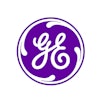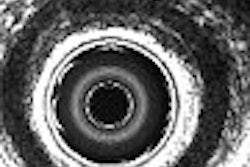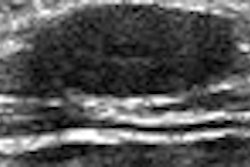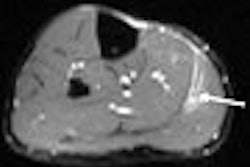Many radiology departments have seen a rising demand for ultrasound studies in recent years. Yet there is little evidence to suggest that demand for other modalities has decreased as a result. More often than not, ultrasound seems to be tacked on to other imaging studies -- apparently unable to handle most applications without "verification" by another modality. Is this really an efficient use of ultrasound, and the best it can do?
A myriad of quality assurance mechanisms are built into the very core of radiology, but none of them are applied to ultrasound, nor to the MRI department at the NoHope Hospital, which we introduced in part I of the series.
Ultrasound today is defined by impressive technology, "freedom" of scanning technique, a plethora of different machine settings, and the storage of only a tiny fraction of the image information generated. But these issues have never been topics of broader discussion within the discipline of radiology. Other modalities are simply said to be "better," and as a result of the inertia, ultrasound is caught in an accelerating downward spiral in favor of other imaging methods.
Is the marginalization of ultrasound in radiology inevitable? It is an appealing thought that the dependability of ultrasound might increase dramatically with a different attitude among radiologists and sonographers. What if we applied a "radiological attitude" and workflow to ultrasound? Could it re-establish the modality as one of radiology's cornerstones?
Ultrasound with a 'radiological workflow'
At our ultrasound department at Linköping University Hospital in Sweden, we decided to give it a try. We installed an ultrasound-dedicated PACS system in June 2002 and abandoned still images altogether in favor of target-covering standardized cine-loop-based exams that are finally fully stored in our radiology PACS and fully retrievable by our ultrasound PACS server for re-evaluation at our ultrasound workstations.
Basically, all still images have been replaced by predefined patterns of dynamic full frame rate scans, depending on the organ or structure being scanned. These scans are five to 10 seconds long and are done at a steady pace in one direction, with care being taken to cover the organ as defined by that organ's scanning pattern. We have chosen to define one full pattern of scans as a "sonoexam."
Standardized scanning became mandatory for all examiners: specialist sonologists, resident doctors, and technologists. Of course there are access problems in ultrasound that have not been solved this way. Now however, almost four and half years and about 30,000 patients later, we can dare to say that the benefits of "radiological workflow" have exceeded all expectations.
In our view, our way of work has several advantages that can be recognized as directly adopted from other radiological modalities:
All ultrasound machines are high-end machines of the same brand and model, and all are updated to the latest standards. All machines are kept at identical image settings for objective comparison among all exams.
No excessive protocols such as "Carl's abdominal," "renal," or "Mary's vascular," are allowed. A few stable image settings mainly designed by target depth and aiming at high frame rates are applied. Used by all involved, this principle increases the general understanding of unique characteristics of pathology regardless of location or individual user preference.
All exams performed by residents and sonographers can be scrutinized and diagnosed by senior sonologists at an ultrasound workstation as they work.
No final reports by residents or other younger colleagues leave the department unless their exams have been evaluated together with a senior sonologist at a workstation.
All off-hour exams are reread the following day and corrected as necessary. We frequently make important discoveries afterward when reviewing younger colleagues' exams (as well as our own!).
Advanced cases performed by sonologists are documented according to the basics of cine loop exam standards for later diagnostic enhancement at workstations.
We can go back to previous exams and learn from our mistakes, since entire organs and structures are captured on cine loops.
Learning is accelerated when scanning patterns are predefined and familiar, enabling the trainee to concentrate on the pathology.
Pathology and rare conditions found in colleagues' exams can be used effectively in education, inasmuch as the scanning technique is universal.
We compare new exams with the old on a daily basis, since all examiners perform the exams in the same standardized way.
For the first time, clinicians get a good understanding of what we're showing them.
As in other areas of radiology, the "skills/cost efficiency quote" increases because experienced sonologists at workstations can serve several less experienced colleagues and sonotechs, who in effect are "the hands" of the sonologists.
Ultrasound technologists (not sonographers) who have good scanning skills, but lack knowledge of ultrasound pathology, perform most routine ultrasound exams, which can be read later by sonologists at workstations at a rate of about 12 exams per hour.
Through a rolling daytime schedule of refresher training passes, our technologists are responsible for the maintenance of the scanning skills of all radiologists' who do off-hour ultrasound.
All of the above apply to fundamental ultrasound as well as contrast-enhanced ultrasound (CEUS). It is widely accepted that cine loops are mandatory for correct assessment of CEUS exams. Full documentation has never before been considered for "plain" ultrasound in radiology, but luckily CEUS has come into the picture as a catalyst for quality documentation in all of ultrasound.
Other positive effects of standardization:
Pediatricians have been trained to perform standardized exams of the brain or premature infants, which experienced sonologists read and report at workstations. A similar organization is planned for the urologists for some of their needs.
Ongoing project in which the clinicians in the emergency ward do standardized cine loops when they examine patients for feedback from experienced sonologists.
In the future, emergency doctors and other examiners may network standardized clips to the hospital for immediate evaluation, even directly from the ambulance.
Exam time
Doesn't it take too long a time to perform a cine loop exam? Certainly there is an adjustment phase for experienced examiners, but one becomes accustomed very quickly to seeing the region of interest while scanning steadily in a predefined direction because the scanning movement becomes intuitive and automatic. Trainees never have a problem adapting to standardized scanning, and senior sonologists rarely need to re-examine their patients if questions arise. Regarding structures of complex anatomy or pathology, we often concentrate on covering the area properly bedside. Since the information is in the scans of the workstation, one can later read the exam's all details in peace and quiet in slow motion moving back and forth, very similar to reading DT exams at a workstation.
The future sonographer
I firmly believe that pathology-skilled sonographers will always be indispensable for ultrasound, but they may play a different role in a future workday of mandatory cine loops and workstations. Their average patient will be more demanding as well, requiring more advanced exam technique based on bedside perception of anatomy than their average patient today. Exams for preoperative tumor staging and contrast-enhanced ultrasound exams are just two examples out of many possibilities. Their role will be able to shift toward more difficult exams, thanks to standardized full-motion scanning of entire structures, with subsequent discussions of findings with their sonologist and clinicians by the workstation.
The great majority of common, technically uncomplicated exams can be done by ultrasound technologists, who lack the sonographer's pathology skills but know how to perform high-quality full-motion scanning of less demanding, well-defined organs and structures. Their exams can be read at a quick pace by senior sonologists who are experienced at subtle but important pathology.
With sonographers relieved of the most common exams by technologists, they will have time for the more advanced studies that really demand their skills. In addition, sonographers are the natural team leaders and teachers of the staff of ultrasound technologists at the radiology departments. All exams are stored and retrievable just as those of all other modalities of radiology. Why would any skilled sonographers mind having their work reread when necessary?
In our experience, the technologists are trained, skilled, and ready for full-motion documentation of the bulk of common ultrasound exams in about four months. The vast majority of these exams are accurately readable at workstations, but occasionally they are not perfect -- as occurs in other radiological modalities. One experienced sonologist can be served by a large number of technologists.
Compare this with the years of training required of each sonographer for selective still-image documentation of bedside findings, which in our view is obsolete. This kind of documentation is so inefficient that it can never reveal what was missed at bedside! We know that even the most experienced sonographers and sonologists miss bedside pathology. We found this out the hard way -- by reviewing our own full-motion exams on our workstations.
Medicolegal aspects
In all of radiology except ultrasound, obvious mistakes are easy to track down. This is of course beneficial to the patients and to the dependability of radiology as a whole. With standardization and full documentation of ultrasound, it is much more difficult to hide behind "It sure wasn't there when I looked!" or "What did you expect -- it's just ultrasound!" when a fellow sonologist or a CT exam finds something obvious that was not in the previous day's ultrasound report.
We have many examples in which obvious pathology has been missed or misunderstood, and corrected later at the ultrasound workstation, or where the accessibility conditions have obviously been too poor to allow the indisputable language in the report. "Sonoexams" just might be ultrasound's port of entry -- into the control, security, and ever-present possibility of legal trouble in the event of obvious neglect -- that the public has the right expect from modern radiology.
The future of ultrasound?
I am convinced that ultrasound will be fighting in vain against radiology's other modalities unless everyone involved in its destiny is prepared to work for a new way of thinking. Ultrasound's amazing potential in radiology must not be sacrificed by self-protective conservatism with continued dependence on snapshots and written reports alone. I don't see how ultrasound can survive as a significant modality without standardization of exams, disclosure of exams for peer surveillance and an adaptation of ultrasound to the radiological workflow. By reorganizing toward a "radiology workflow," ultrasound will be able to recover its previous value in fields that have been lost to CT and MRI today, such as acute abdomen and inflammatory bowel disease.
After all, modern equipment in skilled hands and eyes can clearly demonstrate, for example, swollen fatty tissue, "stranding," and perirenal edema, which in effect have become the privilege of CT alone the past decade. It will also be able to break new ground, as in our department, where contrast enhanced ultrasound (CEUS) has replaced CT and MRI as the method of choice for characterizing focal liver lesions, and CEUS has become an important tool in minor blunt abdominal trauma, as well as in the surveillance of critically ill patients at the thoracic and general intensive care units. The list can be made much longer. Ultrasound can often replace costly MRI exams and CT with its radiation dose and high-dose iodine contrast.
Another important effect of standardization and full documentation is the impact it has had on "wannabe" examiners. After only a few days at our department, colleagues of different disciplines realize that ultrasound requires years of training for dependable and accurate interpretation, but also that the modality has so much more to offer than generally expected. A virtual tsunami of low-end machines is flowing over the world today into the hands of clinicians and radiologists who think ultrasound is easy. The only efficient way to make them understand the demands of ultrasound diagnostics is by requiring standardized full-cine documentation of their work. When we can show them structures and pathology that they overlooked by showing them their own exams, they become aware of the difficulties and tend to adopt more humble positions.
We are also certain that the results of the reproducible exam documentation described in this article stand up to critical scrutiny. If it did not, we would not have experienced such a dramatic increase in the demand for our services in advanced diagnostics, as well as routine cases, with actual replacement of CT and MRI in many fields in the past four years.
Of course well-performed studies would be much appreciated to prove the efficiency of our concept, but how to design such a study? By comparing full documentation with the presently accepted nondocumentation?
In our experience the solution is obvious anyway, as it is with the MRI department at NoHope Hospital.
Further reading
Anyone interested in our program is welcome to visit www.sonodynamics.com, where our currently published standardized exam protocols can be downloaded and subscribed to. In addition, every article I have written for Auntminnie.com is based on these principles, and all of the cine clips I have published are deidentified copies from our original PACS archive.
By Dr. Lars Thorelius
AuntMinnie.com contributing writer
March 8, 2007
Related Reading
Ultrasound -- with liberty and justice for whom? February 12, 2007
Sonographers: Highly experienced, vastly underappreciated, February 6, 2007
Head and neck surgeons can handle ultrasound, journal article says, January 1, 2007
The future of ultrasound: Used by many, understood by few, October 27, 2006
Detection of liver metastases with contrast-enhanced ultrasound, March 23, 2006
Copyright © 2007 AuntMinnie.com



















